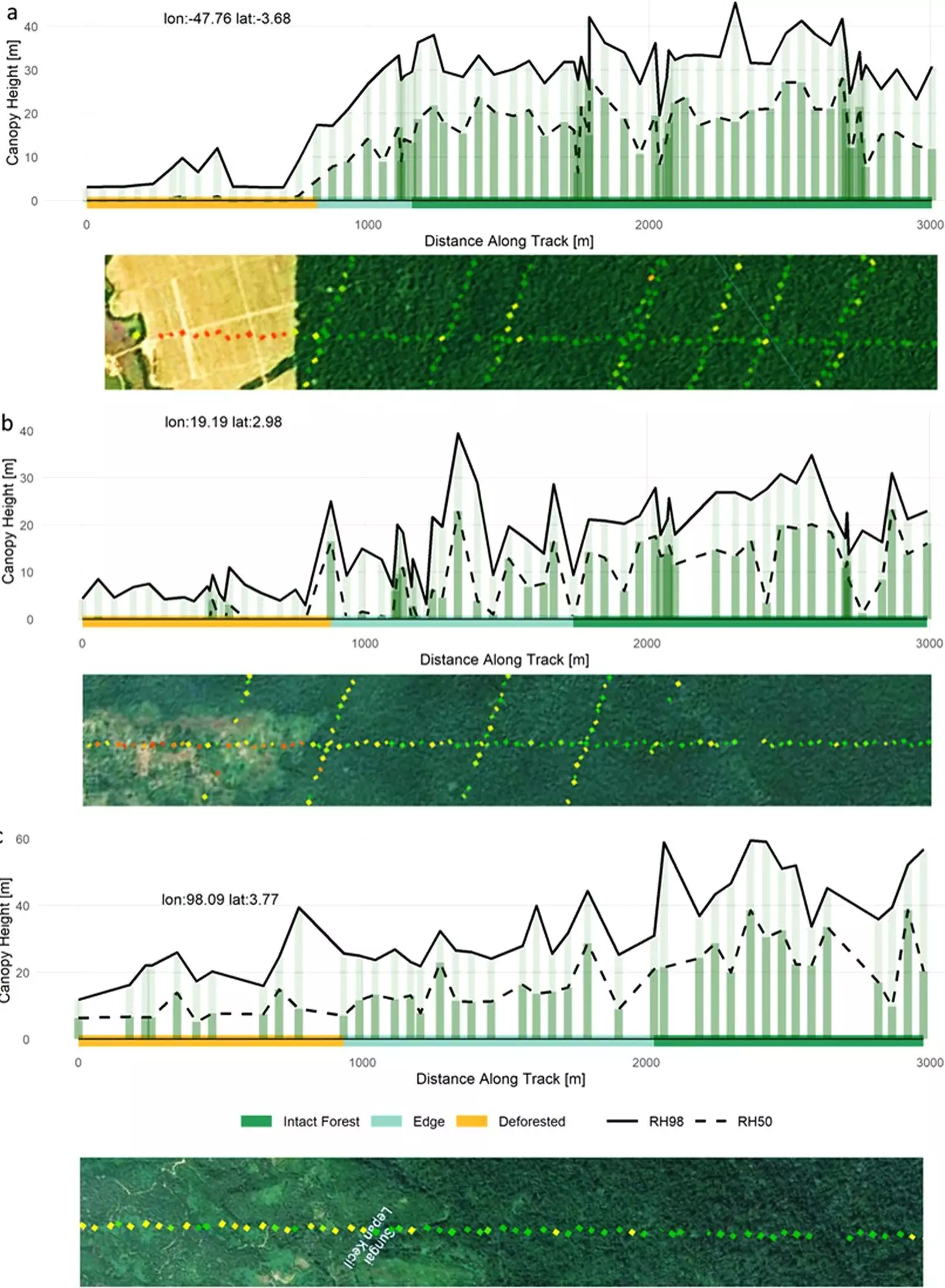Tropical forests play a crucial role in maintaining biodiversity and combating climate change. Unfortunately, these vital ecosystems are under threat from deforestation, which involves the conversion of forests for agricultural, mining, and infrastructure purposes. However, the impacts of human-driven forest degradation on the remaining forests are often underestimated, leading to long-lasting effects that harm biodiversity and exacerbate climate change.
Recent research published in Nature has shed light on the extent and effects of human-driven degradation in tropical moist forests. By utilizing advanced remote sensing technology and data analysis, researchers have provided unprecedented insights into the degradation and fragmentation of these forests. The study reveals that the consequences of human-induced degradation are more significant than previously believed, emphasizing the urgent need to address worldwide forest loss.
While deforestation garners much attention, the focus on degradation is often lacking in discussions about forest conservation. Degradation occurs when forests are subjected to activities like selective logging, fire, and edge effects, which can have far-reaching consequences. This degradation may affect a larger area than deforestation and result in substantial carbon emissions and biodiversity loss. Despite its profound impact, degradation is frequently overlooked in policies aimed at reducing greenhouse gas emissions.
An international team of scientists utilized cutting-edge technology, including the Global Ecosystem Dynamics Investigation (GEDI) instrument on the International Space Station (ISS), to quantify the degradation and fragmentation of tropical forests. By combining GEDI’s forest structure and biomass estimates with long-term satellite observations, the researchers uncovered the hidden human footprint on these forests and quantified its enduring effects. The study highlights the significant impact of agricultural and road expansion on forest edges, reducing canopy height and biomass by 20-30%.
One of the key findings of the study is the edge effect, which extends deep into intact forests, resulting in reduced canopy height and biomass up to 1,500 meters from the forest edge. The cumulative impact of low-intensity disturbances can lead to a substantial reduction in canopy height and alter canopy structure over several decades. This long-term degradation, combined with the low recovery rate of forests, poses a serious threat to the resilience and future of these ecosystems.
The study also identifies forests that are most vulnerable to human expansions, providing valuable insights for conservation efforts. Given the multitude of ecosystem services provided by tropical forests, protecting these vital ecosystems is imperative. The study’s results underscore the need to prevent further degradation and safeguard already degraded forests to fulfill the conservation commitments made at recent international conferences on climate change and biodiversity.
The study provides a comprehensive analysis of the impacts of human-driven forest degradation in tropical moist forests. By highlighting the extent and enduring effects of degradation, the research underscores the urgent need for global action to protect these critical ecosystems. Addressing degradation, alongside deforestation, is essential to safeguarding biodiversity and mitigating climate change in the face of increasing human pressures on tropical forests.


Leave a Reply